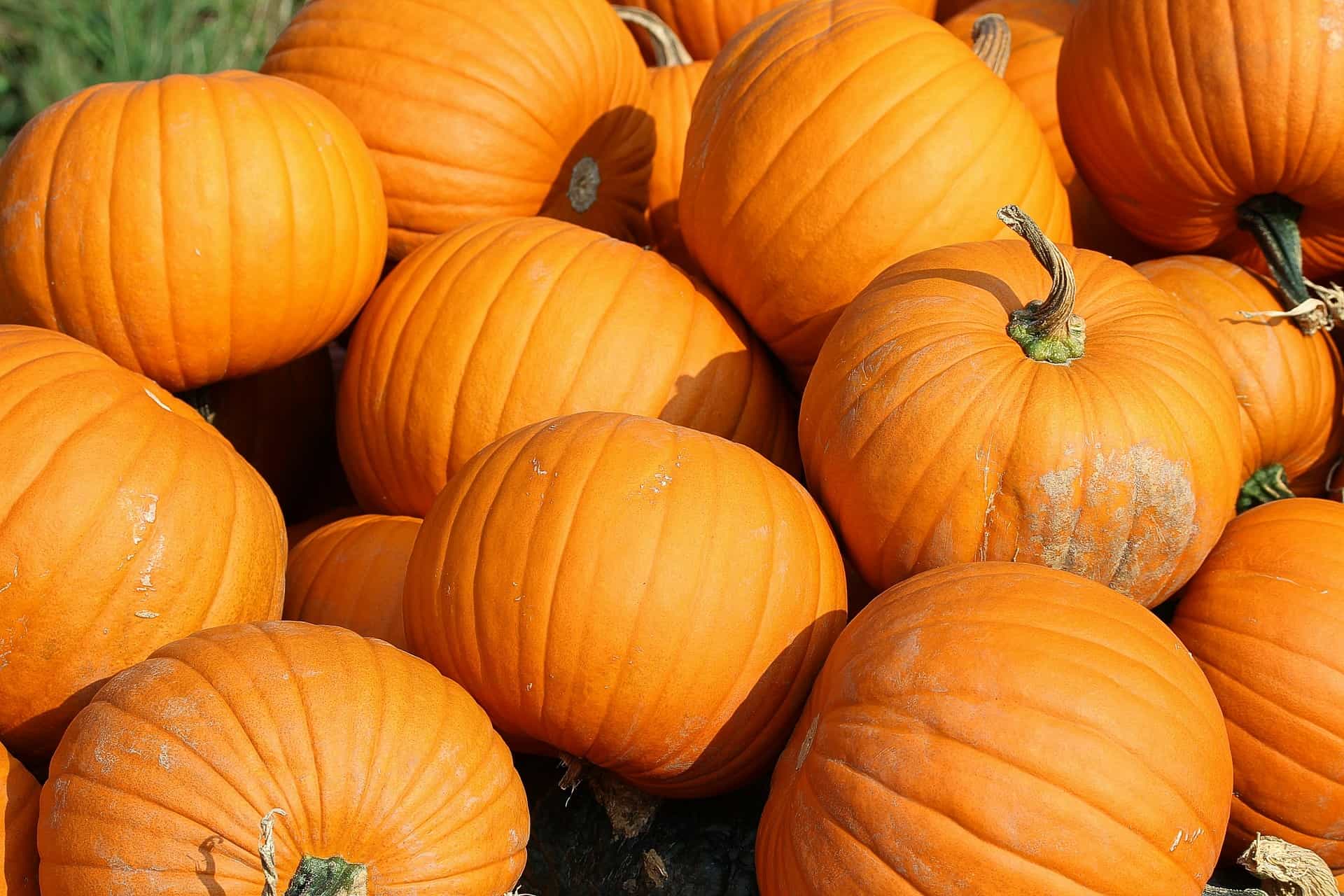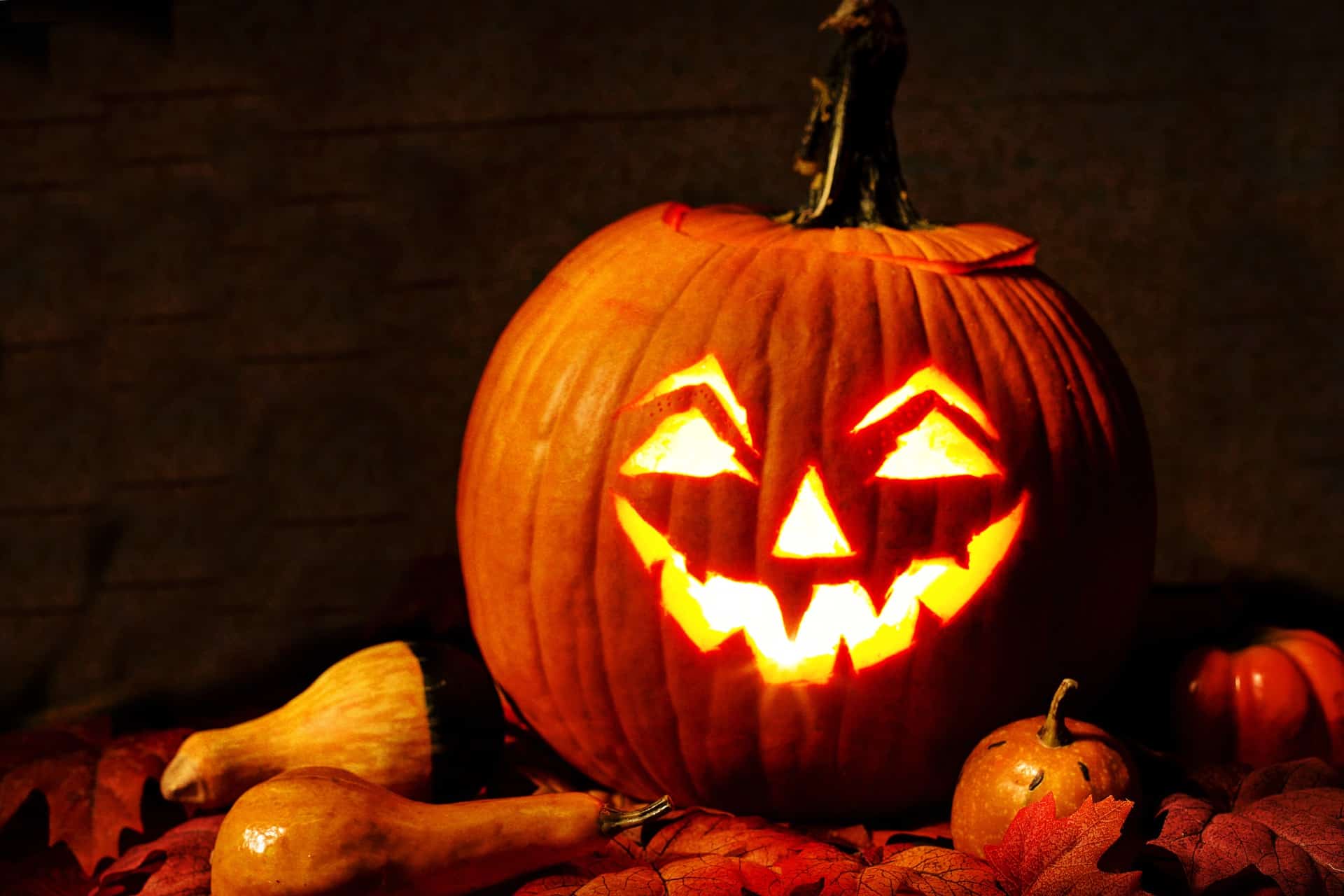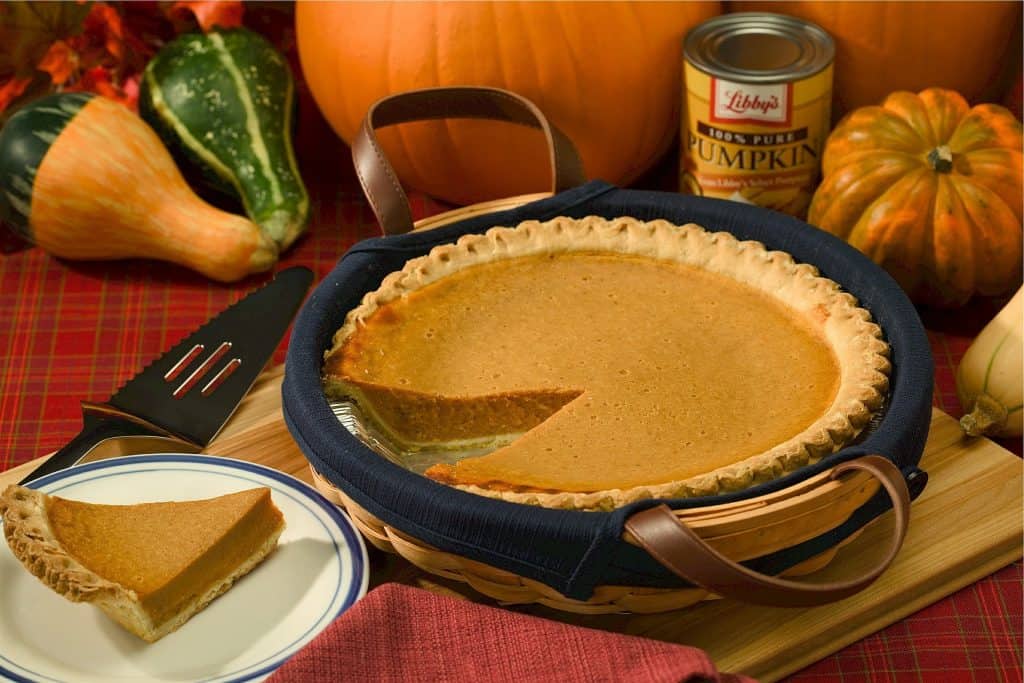
Aside from the colder breezes and the falling leaves, autumn would not be complete without all things pumpkin. Pumpkin spice, pumpkin pies, and jack-o’-lanterns are all powerful symbols of fall, winter, Thanksgiving, and Halloween. We owe it all to the popularity of the mighty pumpkin plant. Squash all the misconceptions and get yourself all pumped up with these amazing pumpkin facts.
- Evidence of domesticated pumpkins date back to around 5,000 to 7,000 BC.
- The United States produced up to 1.5 billion pounds of pumpkins in 2017.
- Around 80% of the US’ pumpkin crops are available during October.
- Pumpkins consist of 90% water.
- It takes 85 to 150 days for a pumpkin to fully grow, depending on the variety.
- Pumpkins are a type of winter squash.
- Their thick skins are ribbed and typically yellow or orange in color.
- They are typically grown in fields called pumpkin patches.
- Pumpkins grow annually on highly-branched vines.
- They are rich in nutrients.
- The term pumpkin has no unanimous scientific definition. Although, the United States and United Kingdom reserve the term for large, round, and orange varieties of winter squash.
- Pumpkins are often used as ornaments and food.
- Wild pumpkins are normally bitter to the taste.
- The flowers of pumpkin plants are bright yellow or orange.
- Native Americans have long used pumpkins for treating intestinal parasites and urinary problems.
- Pumpkin plants grow on every continent except Antarctica.
- Since they are rich in fiber, pumpkins can help in digestion for both humans and pets.
- Typical jack-o’lanterns use the Connecticut field pumpkin variety.
- China and India are the largest producers of commercial pumpkin globally.
- In Charles Perrault’s version of the story of Cinderella, the fairy godmother turned a pumpkin into ad carriage.
The term pumpkin comes from the Greek word pepon.
The English term “pumpkin” traces its origins back to the Greek word pepon, which translates to “large melon.” This is mainly due to the fact that pumpkins are large and round, much like melons.
The French then adopted the word, transforming it to the word pompon. Subsequently, the British changed this to pumpion. Later on, the American colonists would come to know the word as pumpkin.
Pumpkins mostly rely on bees for fertilization.
Like most flowering produce, pumpkins need the help of bees to transfer the pollen from their flowers in order to fertilize other flowers and reproduce. They typically get help from ground-based bees such as squash bees and eastern bumblebees, which are bulky and can handle their large pollen particles.
Unfortunately, farmers now have to breed honey bees to pollinate pumpkins due to the declining population of squash bees. If bees aren’t available, farmers would have to transfer the pollen by hand.
Bumblebees don’t like eating pumpkin pollen.
Bumblebees love to eat a variety of pollen, but they generally stray away from pumpkin pollen. To them, pumpkin pollen particles are heavy and spiny, which makes it generally unappetizing. Texture aside, pumpkin pollen also has properties that can actually harm bumblebees. Its larger grains can actually distort and damage the digestive tracts of the bees.
Usually, bumblebees only visit pumpkin flowers for their nectar, trying to avoid the pollen as much as possible. Some scientists also observed that if the bumblebees do catch some of the pollen, they use leaves to wipe it off of their bodies. The squash bee, on the other hand, thrives off of pumpkin pollen.
Many regard pumpkins as vegetables, but they’re actually fruits.
Like tomatoes, eggplants, and cucumbers, it’s hard to imagine that pumpkins are fruits. In the culinary world, many people regard them as vegetables because they often need to be cooked before consumption and aren’t as sweet as fruits. However, the botanical perspective categorizes pumpkins as fruits, since they bear the seeds of the plant.

Pumpkins are berries.
This is definitely one of the pumpkin facts that can catch people off guard. The English language defines berries as small, pulpy fruits. However, the botanical definition differs from the common usage.
In botany, berries are fleshy fruits that develop from a single flower with only one ovary. Following this scientific definition, tomatoes, eggplants, watermelons, and pumpkins are all berries. Interestingly, strawberries and raspberries are not berries, as botanists classify them as aggregate fruits.
The world’s heaviest pumpkin weighed more than a ton.
In 2016, Mathias Willemijns of Belgium grew a record-breaking pumpkin that weighed a whopping 2,624.6 lbs (1,190.5 kg). To put that into perspective, his pumpkin weighed roughly the same as a small car. To this day, the pumpkin still holds the Guinness World Record for the heaviest pumpkin in the world.
Early versions of jack-o’-lanterns weren’t pumpkins.
The Halloween tradition of making jack-o’-lanterns traces back to the Celtic celebrations of Scotland and parts of Ireland. Generally, the practice references the Irish legend of Stingy Jack, a notorious trickster doomed to roam the dark Earth with only embers in a lantern.Originally, people made jack-o’-lanterns with turnips and mangel beets. When the early settlers arrived in America, they carried the carving traditions, but used pumpkins instead because they were abundant and easier to carve.

Pumpkins are good for your eyes.
Not only are pumpkins tasty and versatile ingredients in the kitchen, they are also great for your eyes and overall health. Pumpkins get their orange color from various carotenoid pigments such as alpha and beta carotene and beta-cryptoxanthin, which the body can synthesize into Vitamin A. They’re also rich in antioxidants such as lutein and zeaxanthin that can help protect your tissues against oxidative damage. How’s that for essential pumpkin facts?
Pumpkins used to be dependent on large mammals, such as mammoths.
Similar to avocados, pumpkins and other gourds evolved to rely on large mammals for seed dispersal. This included elephant-like mammals such as mammoths and mastodons, who ate the fruits and dispersed the seeds through their droppings. Scientists confirmed this when they discovered seeds of squash in fossilized mastodon droppings as old as 30,000 years old. Experts suggest that if it weren’t for human agriculture, pumpkins would have gone extinct following the extinction of these large mammals.
A California farmer grew pumpkins in the shape of the head of Frankenstein’s monster.
In 2014, California-based farmer Tony Dighera successfully grew pumpkins shaped like the head of Frankenstein’s monster. It took him 27 varieties of pumpkins and a hefty sum of $400,000 to create his “pumpkinsteins.” Certainly one of the more interesting pumpkin facts.
In parts of Canada, some people race in boats made of giant pumpkins.
Each year in October, Windsor, Nova Scotia holds an annual water race called the Windsor Pumpkin Regatta. For this race, participants must only use giant pumpkins as floatation devices. Held at Lake Pesaguid, the course spans around half a mile (800 m). You may have never heard of it, but Danny Dill, son of the Atlantic Giant pumpkin breeder Howard Dill, founded the race in 1999.
It may seem like the most unlikely thing, but the first pumpkin boat set sail in 1996. The first person to ever ride it was Wayne T. Hackney of Winchester, New Hampshire.
Pumpkin seeds are highly nutritious.
Pumpkins contain edible seeds inside that you can peel like nuts, but other varieties may also have seeds that don’t require peeling. These seeds come packed with protein, fats, and dietary fiber. They’re also rich in vitamins and minerals such as iron, niacin, zinc, and magnesium. Definitely one of the pumpkin facts you’d want to taste for yourself.
Each pumpkin contains about 500 individual seeds.
One of the most important pumpkin facts is that the fleshy fruit contains lots of edible and nutritious seeds. Although the number of seeds in a pumpkin vary by its size and kind, a typical medium-sized pumpkin contains up to 500 pumpkin seeds inside.

A sport from Delaware involves catapulting pumpkins.
One of the coolest pumpkin facts is that you can hurl them using catapults or shoot them out using cannons for sport. In 1986, the state of Delaware started the annual World Championship Punkin Chunkin (WCPC), held on the first full weekend after Halloween.
Also known as pumpkin chucking or pumpkin chunking, this sport requires you to launch pumpkins as far as possible. You can use slingshots, catapults, trebuchets, or even cannons in this sport.
Around 95% of the pumpkins grown commercially in the US come from Illinois.
In the US, Illinois produces the most pumpkins of any state by a huge margin. For one, it produces 95% of the US’ pumpkin crop intended for processing. The company Nestlé, under the brand name Libby’s, owns a processing plant in Morton that produces 85% of all processed pumpkins in the US.
The Native Americans made mats out of pumpkins.
The indigenous peoples of the Americas have long used pumpkins for a variety of purposes, such as food, medicine, and even storage. Some groups of Native Americans wove dried strips of pumpkins into mats, while some also stored items inside empty pumpkin shells. How’s that for cool pumpkin facts?
Starbucks developed the Pumpkin Spice Latte in 2003.
In 2003, Starbucks started developing the Pumpkin Spice Latte, an iconic seasonal drink usually available in the autumn to winter months. It contains pumpkin spice, steamed milk, espresso, and sugar. In 2015, Starbucks also started adding a small amount of pumpkin puree in the drinks after a brief dispute.
Pumpkin spice does not actually contain pumpkins.
Fall would not be complete without the smell of pumpkin spice lingering in grocery stores. From the name itself, yo7u may think that pumpkin spice is made of pumpkins. However, much like how baby oil does not contain actual babies, pumpkin spice does not contain actual pumpkins.
Instead, pumpkin spice or pumpkin pie spice is only the spice mix that you commonly use in making pumpkin pie. Rather than pumpkins, it typically contains cinnamon, nutmeg, ginger, and cloves. Finally, allspice may also sometimes be added into the mix.
The pumpkin “pies” of early American colonists were actually more like soup.
The history of Thanksgiving might make you believe that pumpkin pies had always been around, but this wasn’t actually the case. Instead, their version of pumpkin pie was more of a stew. The English settlers prepared this stew by hollowing out pumpkins and making a custard-like filling with milk, honey, and spices.
The conventional pumpkin pie we know today did not appear in American cookbooks until the early 1800s. Certainly one of the essential pumpkin facts that can squash popular misconceptions.

The largest pumpkin pie reached a diameter of 20 feet.
On September 25th, 2010, cooks in New Bremen, Ohio made a record-breaking pumpkin pie. The world’s largest pumpkin pie reached a diameter of 20 feet (6 m), weighing weighed 3,699 lbs (1,678 kg). To make this massive pumpkin pie, the cooks used around 1,212 lbs (550 kg) of canned pumpkin. How’s that for amazing pumpkin facts?
Pumpkins and zucchinis come from the same species.
Most pumpkins come from the species Cucurbita pepo, the same species that zucchinis fall under. While they may seem worlds apart, pumpkins and zucchinis are just different cultivars of the same species. In fact, the term zucchini actually stems from the Italian diminutive term for “pumpkin”.
Pumpkins and zucchinis belong to the gourd family Cucurbitaceae, which has around 95 genera and 965 species. By extension, this makes them related to watermelons, cucumbers, luffas, and bitter melons.
In the 1896 Olympics, floating pumpkins served as markers in the 100-meter swim race.
Unlike today, the 1896 Olympics held swimming competitions in the open sea. Competitors had to race toward the shore, while a string of hollowed-out, floating pumpkins served as lane markers.
A person impaled a pumpkin on top of a spire in Cornell University as a prank.
On October 8, 1997, an unidentified person or group of people placed a 50-pound pumpkin on top of a spire in Cornell University in Ithaca, New York. They placed it on top of the McGraw Tower, which stood 173 ft (52.7 m) tall.
This creative prank puzzled students and administrators alike. Even after months had passed, the pumpkin stayed there without rotting, prompting many to wonder if the object was even a pumpkin at all. To verify, a team of undergraduate students took a tissue sample of the object using a remote-controlled weather balloon. Surprisingly, the samples confirmed that the object was indeed a pumpkin.
Pumpkins are part of the Three Sisters in agriculture.
In agriculture, the term “Three Sisters” refers to the three main crops of North American indigenous groups. The Three Sisters include climbing beans, maize (corn), and winter squash. Native to Mesoamerica, these crops eventually spread throughout North America. Among the three, pumpkins were the first crops to be domesticated.
Planting the Three Sisters together is a common agricultural technique called companion planting. The three crops share a symbiotic relationship: the maize serve as poles for the beans to climb on, while beans provide nitrogen in the soil and the squash acts as a natural mulch.
The US holds festivals dedicated to pumpkins.
Circleville, Ohio holds the biggest annual festival in the United States dedicated to pumpkins. Led by a corporation of the same name, the Circleville Pumpkin Show celebrates their local agriculture. Originating from 1903, Mayor George R. Haswell first held a pumpkin and corn exhibit in celebration of local harvest. Since then, it became an annual tradition.
There are many varieties of pumpkin.
Although the pumpkins that you may typically encounter are round and orange, pumpkins come in all shapes, colors, and sizes. Most pumpkins are varieties of the Cucurbita pepo species, but there are also pumpkin varieties from the species Cucurbita maxima, Cucurbita argyrosperma, and Cucurbita moschata. Decorative pumpkins are edible but typically don’t have much flavor to them.

Most parts of the pumpkin plant are edible.
One of the more well-known pumpkin facts is that most of the plant’s parts definitely have their uses. That said, the flesh and seeds are not the only edible parts of the pumpkin. Many cuisines use pumpkin leaves and flowers as flavoring or garnish.
In Korea, for example, pumpkin leaves of the C. moschata species are popular as vegetables. Usually, North Americans prepare pumpkins by mashing them, roasting them, or making pumpkin pie.
There's an event where people run wearing only shoes and carved pumpkin headwear.
The Naked Pumpkin Run happens every year in parts of the United States, such as Colorado, Washington, Oregon, and California. In this event, people run through a course wearing nothing but shoes and a helmet made of hollowed-out pumpkins.
The event dates back to 1974, starting when a large number of students from Boulder’s University of Colorado ran naked across the school campus in a failed Guinness World Record attempt.
Some pumpkins are poisonous.
Although most parts of pumpkins are edible, some varieties of pumpkins contain toxins called cucurbitacins. These are bitter compounds that protect some pumpkins against animals that may want to eat them. Consuming a large amount of cucurbitacin can lead to poisoning, which some refer to as “toxic squash syndrome”.
Pumpkin beer is popular in the United States.
One popular style of beer in the United States is pumpkin beer or pumpkin ale. This type of beer contains pumpkin flesh, and may sometimes contain some pumpkin spice reminiscent of pumpkin pie.
In the 1980s, Buffalo Bill’s Brewery in Hayward, California sold the first commercially brewed pumpkin ale based on George Washington’s brewing studies.
Was this page helpful?
Our commitment to delivering trustworthy and engaging content is at the heart of what we do. Each fact on our site is contributed by real users like you, bringing a wealth of diverse insights and information. To ensure the highest standards of accuracy and reliability, our dedicated editors meticulously review each submission. This process guarantees that the facts we share are not only fascinating but also credible. Trust in our commitment to quality and authenticity as you explore and learn with us.
